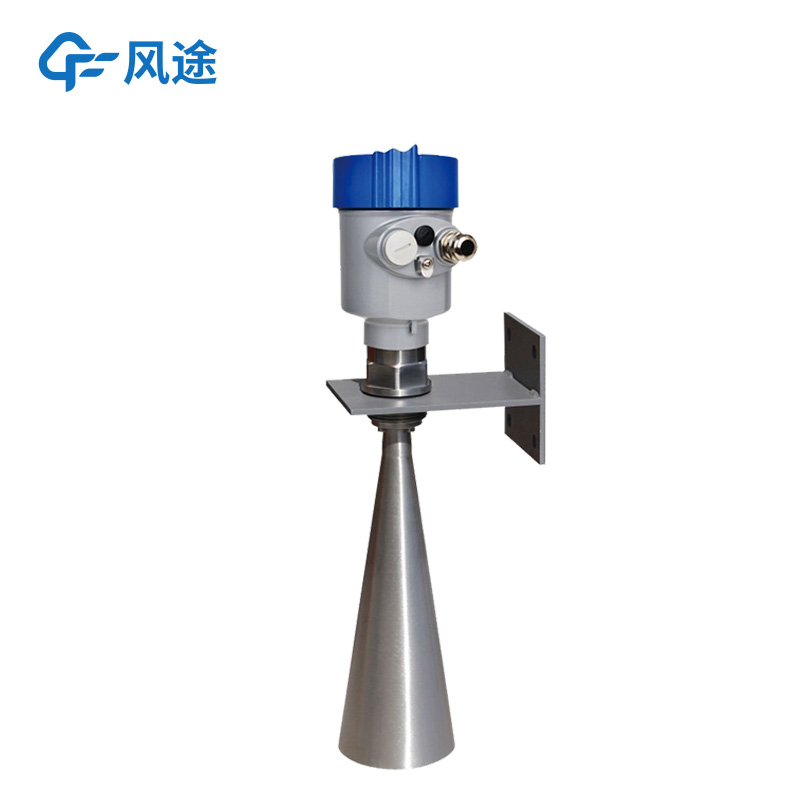Tianqiong Sensor IOT Technology Co., Ltd
Sales Manager:Ms. Emily Wang
Cel,Whatsapp,Wechat:+86 15898932201
Email:info@fengtutec.com
Add:No. 155 Optoelectronic Industry Accelerator, Gaoxin District, Weifang, Shandong, China

Sales Manager:Ms. Emily Wang
Cel,Whatsapp,Wechat:+86 15898932201
Email:info@fengtutec.com
Add:No. 155 Optoelectronic Industry Accelerator, Gaoxin District, Weifang, Shandong, China
time:2025-07-09 09:06:57 source:Weather Station viewed:256 time
To measure water levels, a Radar Water Level Sensor is required, such as the YW-76 introduced today. Let's take an in-depth look at its advantages and working principle.
1. High-frequency Technology Ensures Measurement Accuracy
The YW-76 horn-type Radar Water Level Sensor adopts Frequency Modulated Continuous Wave (FMCW) technology operating in the 76-81GHz frequency band, featuring high working frequency and short wavelength. In complex river environments, it can clearly identify water surface reflection waves even amid water flow fluctuations and underwater debris interference, achieving a measurement accuracy of ±1mm. This meets the high-precision data requirements of scenarios like water conservancy projects and hydrological monitoring.
2. Wide Measuring Range and Small Blind Zone Enhance Applicability
The standard measuring range of the water level gauge is 0.05m-35m, with a maximum range of up to 120m, making it suitable for monitoring various water areas such as small ponds, large reservoirs, and rivers. The blind zone is only 8cm, enabling accurate measurement of water levels close to the bottom in low-water scenarios like urban drainage pipelines, avoiding data loss and providing data support for flood prevention and waterlogging control.
3. Structural Design Adapts to Complex Environments
The antenna of the YW-76 consists of a 42mm lens antenna and a ∅146mm horn, made of PTFE+304 material. It can withstand a process temperature range of -40-80℃ and a process pressure range of -0.1-0.3MPa, with an IP67 protection rating. It maintains stable operation in harsh environments such as high temperatures and heavy dust, ensuring continuous and effective monitoring.
4. Diversified Debugging and Communication Methods Improve Efficiency
On-site debugging can be performed via an LCD display, or with upper computer software on a PC. Communication methods include USB-to-RS485 serial cables (4-wire), USB-to-TTL serial cables (2-wire), and USB-to-Hart-modem (2-wire). It supports mobile phone Bluetooth debugging and 4G network remote debugging/upgrading, reducing on-site operation time and improving work efficiency.
In summary, the YW-76 horn-type Radar Water Level Sensor demonstrates high efficiency and reliability in water level monitoring through the combination of technical features and practical design, making it a commonly used water level sensor in the industry.

The 7-element Portable Weather Station can real-time monitor seven key meteorological elements: wind speed, wind direction, air temperature, humidity, atmospheric pressure, illumination, and optical rainfall. Monitoring wind speed and direction helps understand air flow conditions, which is of great...
Since ancient times, agriculture has been the industry most closely tied to natural conditions, with "relying on heaven for food" being the most authentic portrayal of farmers. Traditional agricultural production heavily relies on personal experience and passed-down farming proverbs to pre...
During ship navigation, when encountering waters with unknown water depth conditions, ship drivers face potential risks such as reef striking and stranding, which seriously threaten navigation safety. In such cases, a Portable Ultrasonic Water Depth Meter can be used.The Portable Ultrasonic Water De...
What types of Water Quality Monitors are there?In an era when environmental protection is receiving increasing attention, water quality monitoring plays a vital role in maintaining ecological balance and safeguarding human health. The advent of online water quality monitoring instruments has s...